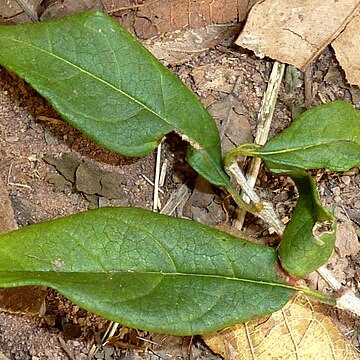A large shrub or slender tree. It grows 3-6 m tall. It sometimes has branched spines. The leaves are simple and opposite. They are 2.5-10 cm long. They are broadly sword shaped. The often taper from the middle top the tip. The leaves are dark green and glossy on top and paler and duller underneath. The leaf stalks are 1.3 cm long. The flowers are in clusters. They are on slender stalks at the nodes. They are yellowish-green and become pale orange. The fruit are 2.5-5 cm across. They are rounded but often lopsided. They are slightly marked into sections. They are shiny green and soft. They are edible.
Small tree or shrub, up to 6 m high. Leaves 90 x 30 mm, oblong to ovate-oblong, discolorous, glabrous, petiole 5-10 mm long. Cymes axillary, sparsely pubescent, glabrescent, pedunculate. Corolla tube 3.0-3.5 mm long. Stigma 4 mm exserted. Flowers yellow or green.


